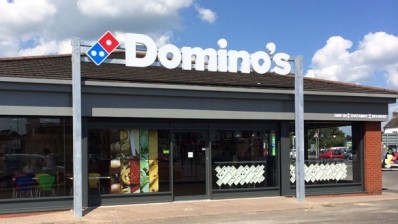Comment: Talking about a generational shift

As food consultant Mike Palmer has put it: “People collect tastes (and dishes) as they once collected rare 12 inch tracks, and those food choices are chronicled immediately using phones and uploaded to social networking sites, often before a bite has been taken”.
The emergence of so many eating-out brands entering this year’s Youth100 highlights, not only highlights the resurgence of the sector and renewed optimism in the general economy, but also the sheer breadth of concepts and cuisines currently on offer and being explored.
The UK restaurant landscape is undergoing a period of significant change, with a renaissance of pubs, strong emergence of new fast food operations or fast casual formats, and a plethora of street food markets nationwide. These concepts are enabling consumers to enjoy premium food in an informal setting. There is also a growing demand from consumers to have ‘what they want, when they want it’ helping to drive the informal casual dining experience.
According to consultancy firm Allegra Foodservice, premiumised informality, from street food to fine dining is now widespread across the restaurant sector, and this new era is being driven by food pleasure seekers.
Though the recession has eased, there has also been a strong value legacy, with consumers expecting value delivered across all occasions from every channel. Discounting is still very prevalent among branded restaurants, with 46% of consumers claiming to use discount vouchers more often in the last 12 months. It can be said that there has been a “heavy cloak of value sitting on consumers’ shoulders”.
The new era for the restaurant market is identifying that consumers are becoming more interested in food, more willing to seek indulgence and shrug off that heavy cloak of value – in colloquial terms, the ‘sod-it’ factor.
The consumers most active in the restaurant sector are the younger demographic, aged 18-24. However, the younger generation has higher expectations. They won’t take seriously an organisation that is unable to do the basics right, and these expectations are rising all the time. Brand consistencies have become more important judging from this year’s list, with a number of established brands making their debut.
While the top five in this year’s will surprise no one, all are relatively low-cost purchases and in respect of Nando’s, Subway and Domino’s, masters of building loyal customer bases. The surprises are to be found outside the top five, with a number of more established brands, which are squarely aimed at the family-dining market, with such names as Frankie & Benny’s, Bella Italia, Prezzo and Chiquito being included. Although young adults are not necessarily penny-pinchers, but because they generally have limited disposable income, they want to feel that what they buy is really worth the price. All these established brands place a strong focus on value offers and meal deals.
Although fast food is again represented in this year’s list, the majority of the new entrants come from the casual dining sectors, which although slow to fully grasp the world of social media is now fully engaged with the medium in highlighting offers. They are also growing day parts and increasingly moving away from the traditional lunch and dinner time slots.
Looking ahead to next year’s list, I expect the growing move towards fast-casual concepts - a restaurant that serves food over the counter (no table service) but at a higher quality and price point to fast food, to be represented as positivity about the economic environment increases and dwell time continues to come under pressure.













